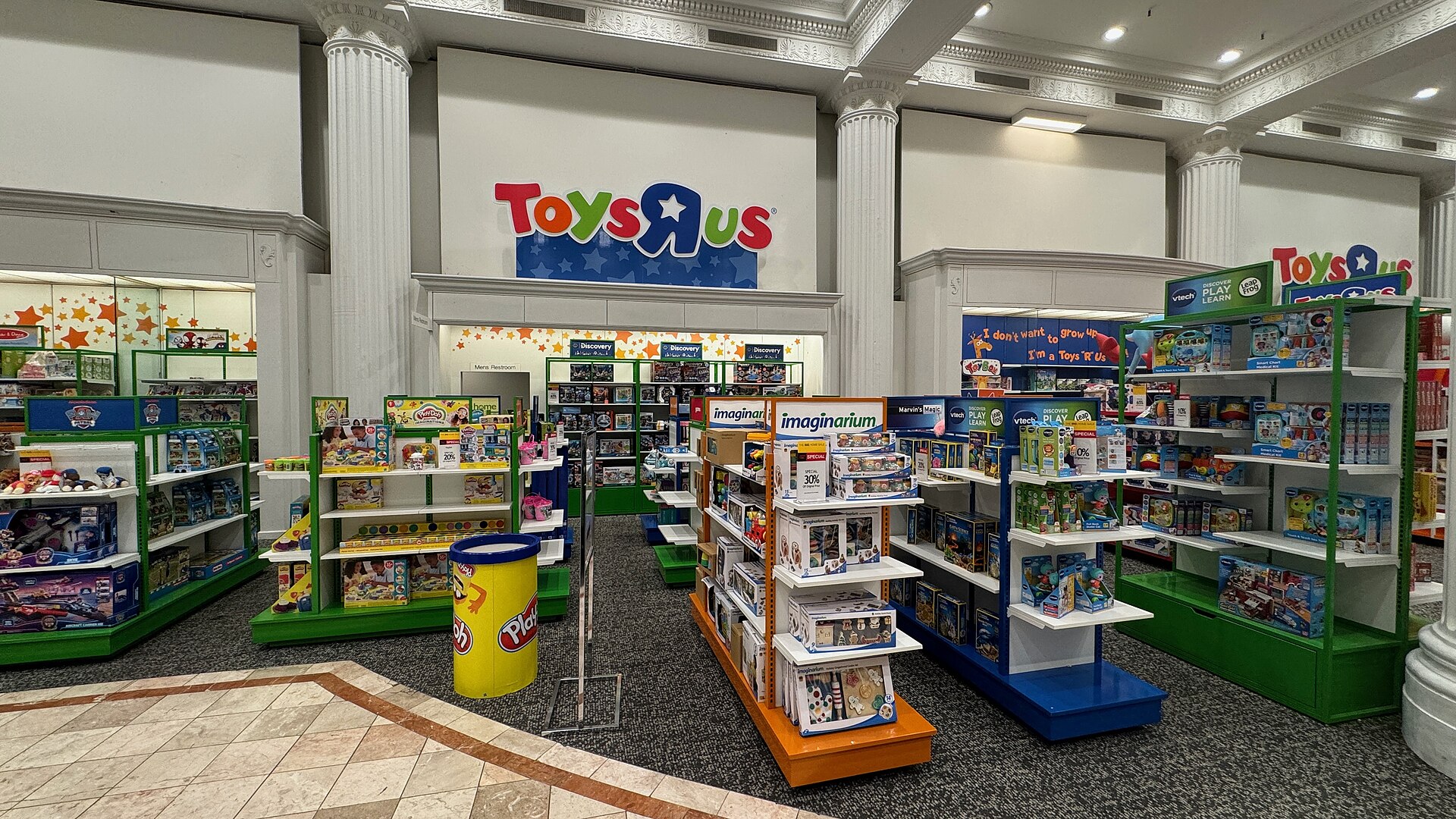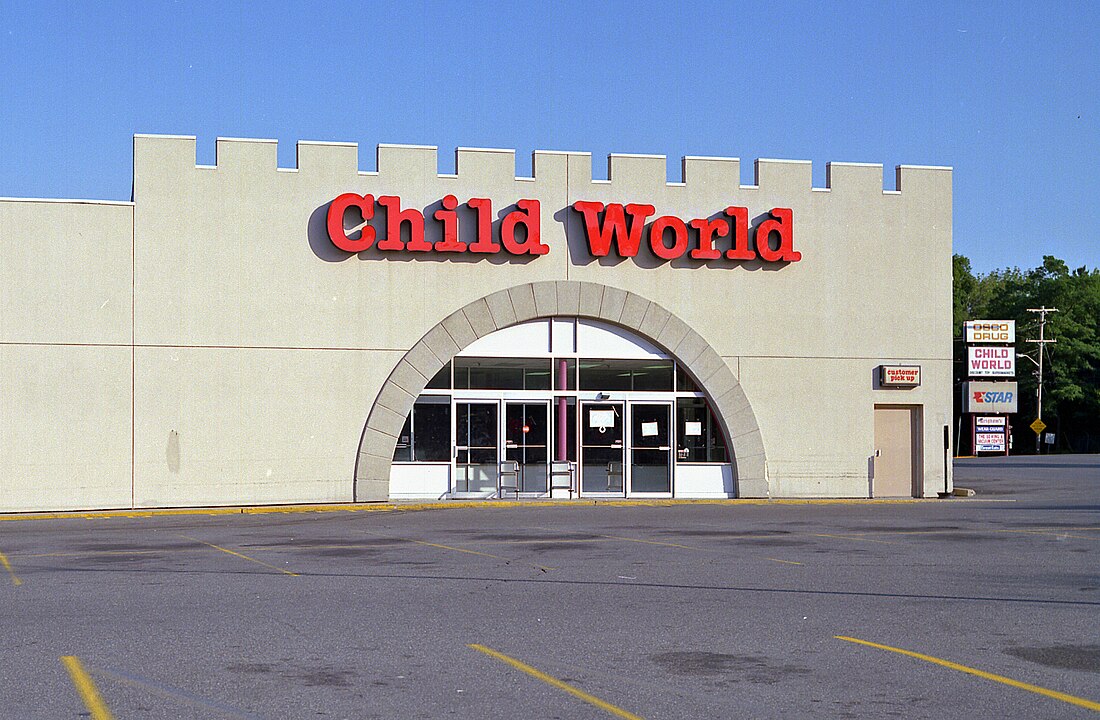We all remember the magic of walking into a toy store as a kid—the excitement, the bright displays, the wall of plush animals just waiting to be hugged. But for many once-iconic chains, that magic couldn’t outlast the changing tides of retail. These bankrupt toy stores were household names, beloved by families across the country. Sadly, even national popularity wasn’t enough to save them from online competition, rising rents, and shifting consumer habits. Here are nine toy retailers that closed their doors despite being fan favorites for generations.
1. Toys “R” Us

By Keizers – Own work, CC BY-SA 4.0, Link
At one point, Toys “R” Us was the undisputed king of toy retail. With over 1,500 stores worldwide, it dominated birthdays, holidays, and weekend family outings. But in 2017, the company filed for Chapter 11 bankruptcy, citing $5 billion in debt and pressure from e-commerce giants like Amazon. Despite a strong brand and loyal customer base, financial mismanagement and outdated stores helped seal its fate. A few pop-up locations have tried to revive the brand, but it’s never returned to its former glory.
2. KB Toys
If you grew up in the ’80s or ’90s, you probably remember KB Toys in nearly every mall in America. The chain was known for its compact, high-energy stores filled with toys stacked floor to ceiling. In 2008, KB Toys filed for bankruptcy for the second time, citing plummeting sales and increased competition. All 400-plus stores eventually closed, leaving a major hole in mall-based toy retail. For many shoppers, it was a clear sign that the golden age of toy stores was coming to an end.
3. FAO Schwarz (Original Chain)
FAO Schwarz was more than just a store—it was a destination. Famous for its giant piano in the movie Big, this upscale toy retailer was founded in 1862 and catered to both kids and collectors. But in 2009, the original chain filed for bankruptcy, citing declining foot traffic and unsustainable operational costs. Toys “R” Us purchased the brand and temporarily revived it, but the store’s original identity was never quite the same. The flagship in New York eventually closed, symbolizing the loss of high-end toy retail.
4. Zany Brainy
Zany Brainy focused on educational toys, games, and books, appealing to parents who wanted learning wrapped in fun. At its peak, it had over 180 stores and a devoted customer base. But in 2001, the company filed for bankruptcy and was acquired by rival FAO Schwarz. Unfortunately, that didn’t save the brand, and all stores closed soon after. Despite its thoughtful mission, Zany Brainy couldn’t compete with cheaper online options and discount retailers.
5. Discovery Channel Store
While not a traditional toy store, the Discovery Channel Store was a go-to spot for science kits, gadgets, and STEM-friendly toys. The stores were often found in malls and attracted curious kids and parents alike. In 2007, the company shut down all brick-and-mortar locations, opting to focus on online sales. It was a sign of the times—physical stores were too expensive to maintain without massive traffic. Though still available online, the in-person experience is deeply missed.
6. Imaginarium
Imaginarium specialized in wooden toys, building blocks, and creative play sets. Known for quality craftsmanship and minimalist design, it attracted families who valued durability over flashing lights. The brand was once sold inside major retailers like Toys “R” Us, but its standalone stores disappeared quietly. As digital toys gained popularity, demand for hands-on learning toys waned. Its quiet fade from the retail world left fans wondering what happened to their favorite place for imaginative play.
7. Noodle Kidoodle
This lesser-known chain focused on educational and developmental toys and was popular with teachers and parents in the ‘90s. Bright, welcoming stores offered hands-on demos and workshops for kids. Despite its niche appeal, Noodle Kidoodle merged with Zany Brainy and eventually disappeared after bankruptcy. It’s another reminder that even beloved specialty retailers couldn’t survive industry consolidation. Its loss was particularly felt by families seeking screen-free entertainment.
8. K·Bee Toy & Hobby
This discount offshoot of KB Toys catered to bargain hunters and budget-conscious families. Known for big markdowns, it was a treasure hunt for deals on toys, games, and hobby supplies. Despite its popularity, the chain couldn’t separate itself from the financial woes of its parent company. It closed along with KB Toys in 2008, and shoppers lost another budget-friendly option. The fall of K·Bee showed that even lower-cost retailers weren’t immune to bankruptcy.
9. Child World

By Anthony92931 – Own work, CC BY-SA 3.0, Link
Child World was once the second-largest toy retailer in the U.S. behind Toys “R” Us. Founded in the 1960s, it expanded rapidly before filing for bankruptcy in 1992. Struggles with inventory, outdated stores, and tough competition led to its downfall. Unlike some others, Child World never got a revival attempt—it simply vanished. For older shoppers, it’s a name filled with nostalgia, even if it’s unfamiliar to younger generations.
Popularity Doesn’t Always Pay the Bills
Each of these bankrupt toy stores once brought joy to millions, but nostalgia couldn’t keep them afloat in a changing retail world. Between rising costs, competition from online giants, and shifting consumer habits, even the most beloved names found themselves forced to close. It’s a reminder that no brand is too big to fail—and that childhood memories don’t always guarantee business survival.
Did one of your favorite toy stores disappear from this list? Share your memories and let us know which store you miss the most in the comments below!
Read More
10 Store Policies That Changed After Too Many Returns
8 Grocery Store Tricks That Make You Spend on the Wrong Products

